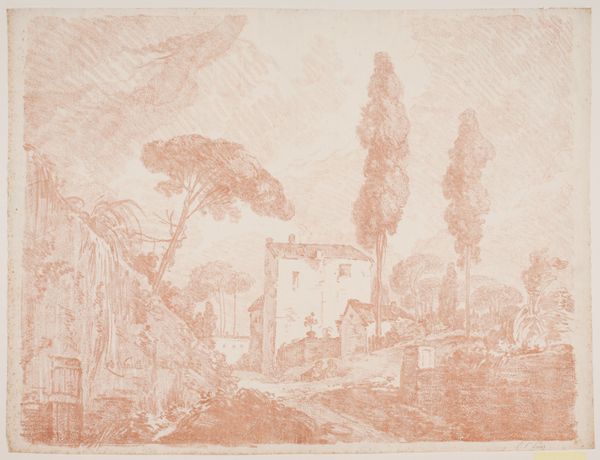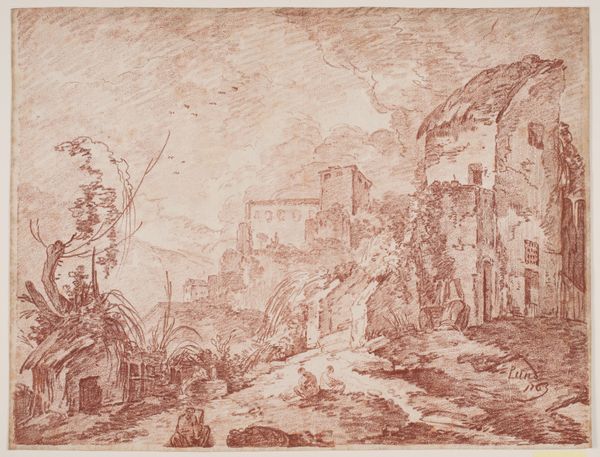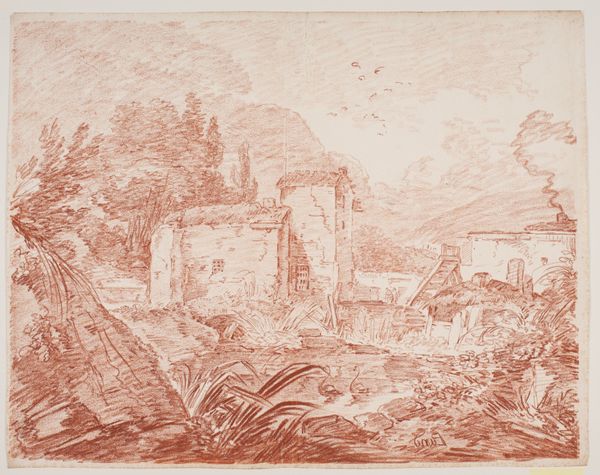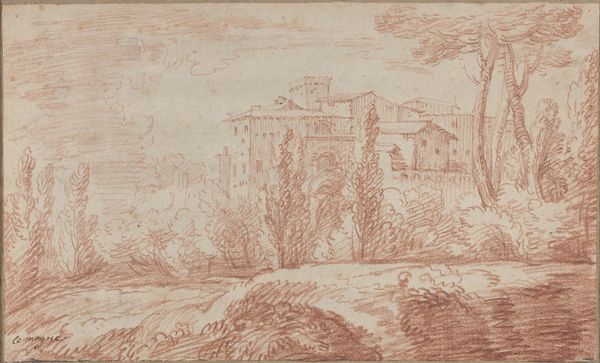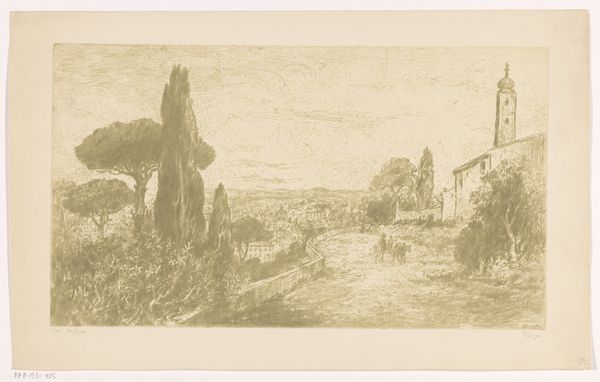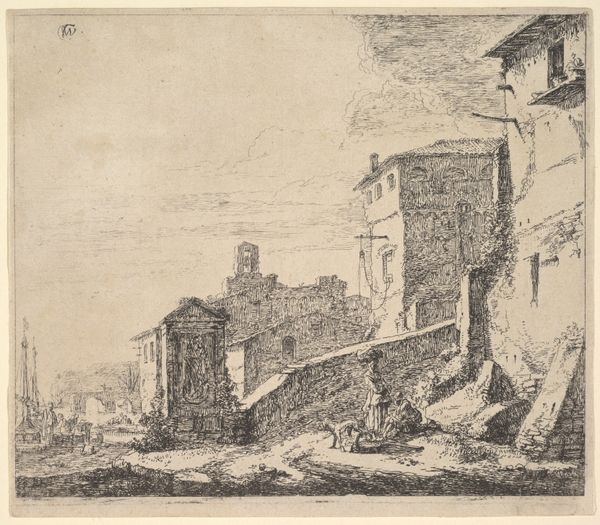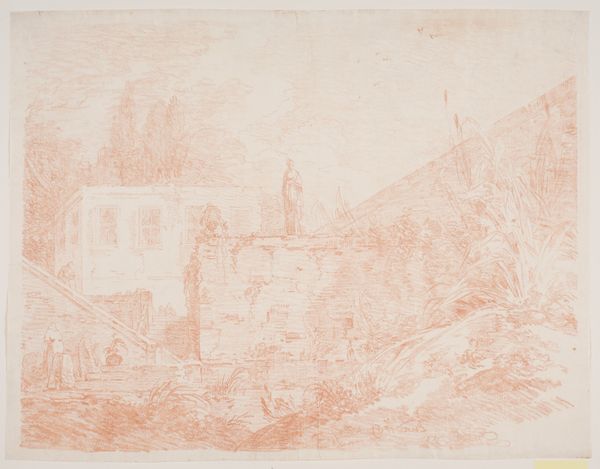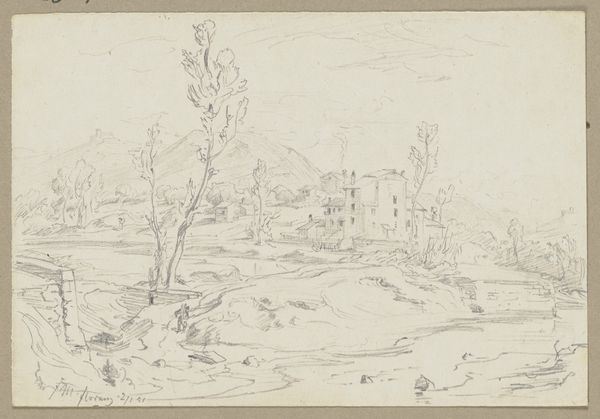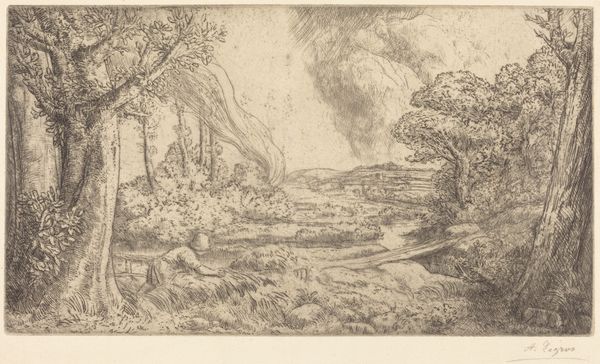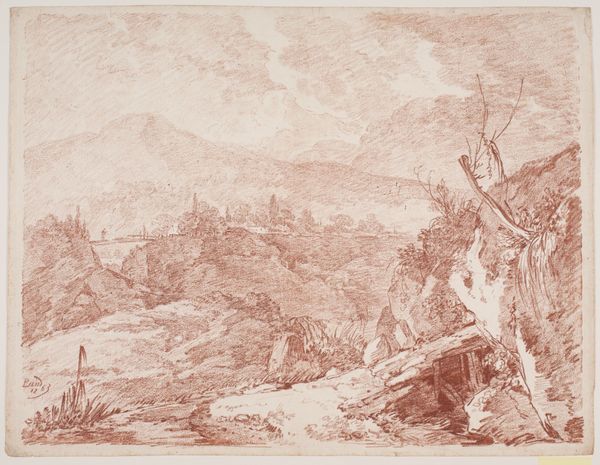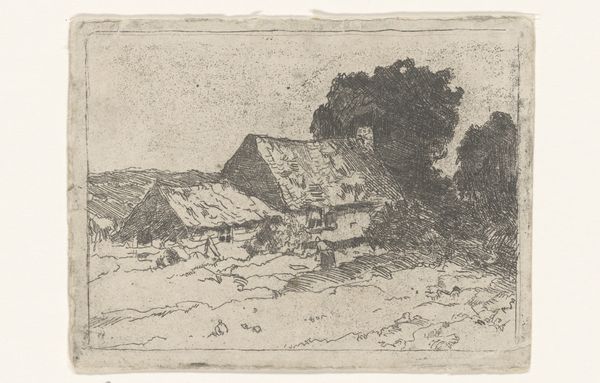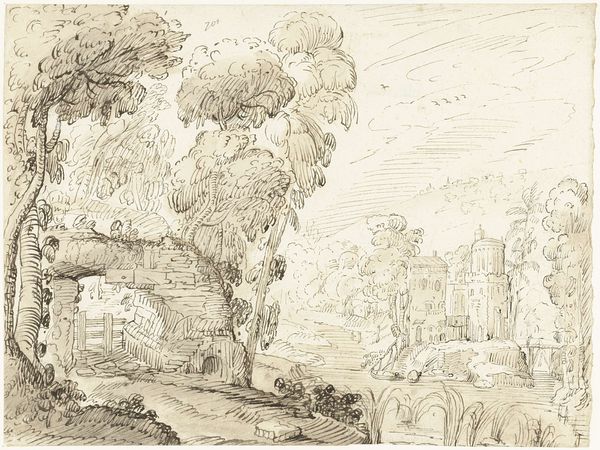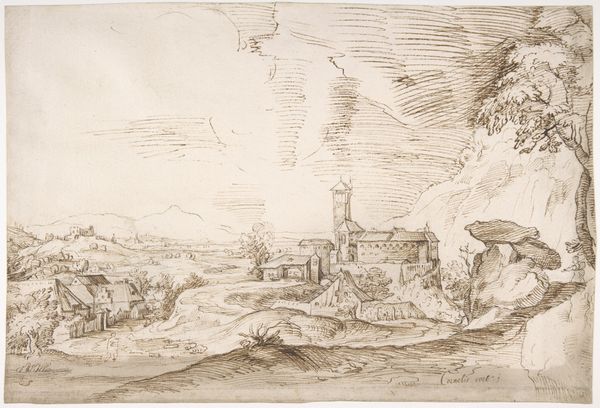
drawing, etching, ink
#
drawing
#
etching
#
landscape
#
etching
#
ink
#
cityscape
#
italian-renaissance
Dimensions: 423 mm (height) x 543 mm (width) (bladmaal)
Curator: Hmm, look at this landscape, all rust and dreams... It feels like stepping into a memory, doesn't it? Editor: Indeed. We're looking at "Italiensk fantasilandskab med træer og huse"—"Italian imaginary landscape with trees and houses"—created in 1763 by Jens Petersen Lund. What strikes me is how the image is entirely rendered in sepia tones using etching and ink on paper. Curator: Sepia… Like old photographs, but more like a dream. I feel immediately nostalgic, for a place I've never been. Does that make sense? Editor: Perfectly. The imagined space speaks volumes. It places this work within broader 18th-century discourses of the pastoral and idealized notions of Italy, so often viewed from a northern European perspective. It presents the rural idyll as a space of leisure, enjoyed by a select few, no? Curator: It’s not all dreamy. I see real structures there; not palaces, but homes. There are folks sitting down, in the front of a pretty plain looking building. Not that different from anywhere, perhaps? Maybe he captured a certain something real about it, not just a rich person's daydream? Editor: It's true that it's not the romanticized, ruin-filled landscape often favored during the Grand Tour. Lund perhaps aimed to represent a more everyday Italian reality, subtly infusing it with elements of the picturesque. Consider the figures: Are they workers? Are they resting? Are they property owners? The possibilities of interpreting class and labor here are endless. Curator: True. Though the drawing style itself, so free, so loose… That is, somehow, modern feeling. Editor: Certainly. And this tension, the everyday combined with the fantastical…It invites viewers to engage critically with their own assumptions about place, class, and the allure of "otherness," so prevalent during that period. What stories does it allow, and whose stories get omitted? Curator: A bit melancholy maybe? Yet… lovely. It invites you in. Like a postcard from someone you love, even if you don't know their name. Editor: Absolutely. This artwork reveals how even seemingly idyllic scenes can mask deeper socio-political undercurrents, prompting us to question whose ideal, and at whose expense, it truly represents.
Comments
No comments
Be the first to comment and join the conversation on the ultimate creative platform.
